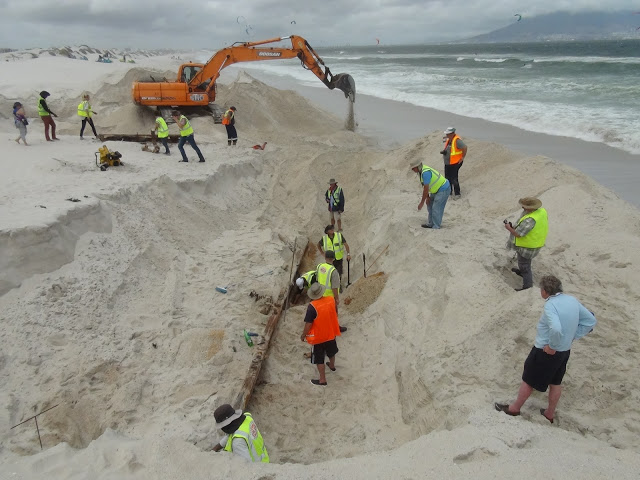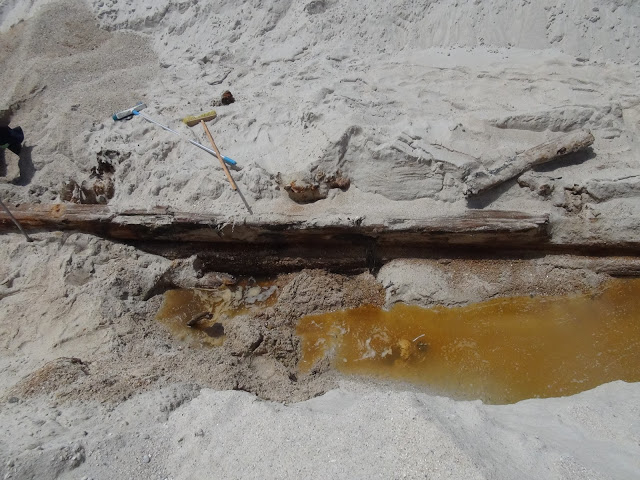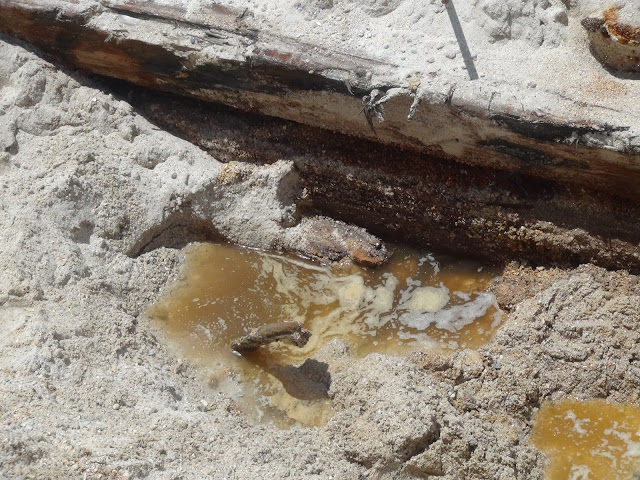 |
 |
|
HAARLEM SHIPWRECK IN CAPE TOWN SOUTH AFRICA | ÎÁËÎÌÊÈ ÊÎÐÀÁËß ÕÀÀÐËÅÌ ÊÅÉÏÒÀÓÍ |
A piece of history was found in 2018 in Cape Town, South Africa. Many more shipwrecks are located at Namibia's west coast.
2018: South Africa: newly found shipwreck at Bloubergstrand Beach, Cape Town, South Africa.
SAHRA, The South African Heritage Resources Agency undertook a project along the beach at Bloubergstrand to locate the wreck of the Haarlem which wrecked somewhere along Table Bay coast in 1647. A geophysical survey was undertaken to try and pinpoint places to look more closely at and then small test excavations were undertaken to uncover what was picked up in the survey. A few pieces of wreckage were uncovered but as yet they have not been identified. The African Institute for Marine and Underwater Research (AIMURE) is the organisation that has been undertaking the project and have been doing it under permit from SAHRA. They will publish the results of the survey in the near future.
There are many, many forgotten shipwrecks under the sand and in the shallows along that stretch of South African coastline, and it is great to see one of them getting some attention.
YouTube video of Haarlem shipwreck discovery:
The Haarlem was a Dutch ship that wrecked at the Cape in 1647. The survivors
of the wreck spent a little bit of time here before being rescued, and when
they got back to Holland they reported that the Cape had water and fertile
soil - that it would be a good place for a settlement/refreshment station.
Following that, Jan van Riebeeck was sent here and the rest is history. So it
is a very significant wreck in the history of European settlement at the Cape.
 |
 |
The shipwreck that changed South Africa forever
The "Haarlem" ("Nieuw Haarlem"), Dutch East India Company's (VOC) ship (one of
numerous "Indiamen"), sank at the coast of Table Bay on Sunday, 25 March 1647
during the storm. "Haarlem" was constructed at the VOC Amsterdam shipyard with
a length of about 45 metres and a width of 10 metres.
The route around the Cape was particularly treacherous and was officially
known as the
Cape of Good Hope or Cabo do Bona Esperana (Portuguese). It was
soon renamed the Cape of Storms as many "Indiamen" ran aground or sank while
negotiating the route around the Cape Peninsula.
58 crew members were repatriated by accompanying ships soon after the incident
with 62 men left behind to salvage as much of the cargo as possible - spices,
pepper, porcelain and textiles. They built in a makeshift camp, Fort "Zandenburch"
(Dutch for Sandcastle), where they lived for about one year, bartering
livestock and fresh meat from the indigenous Khoe Khoen people. They had a
great success fishing in the nearby Salt River and ventured as far as Robben
Island in Table Bay.
 |
 |
Crew men reported favourably on their experiences when they returned to
Holland and, as a result, VOC management decided to establish a stopover for
their ships. This restocking settlement, known as the "Tavern of the Seas",
where ships stopped for replenishing of water and food supplies, later
developed into the city of Cape Town. The wrecking of Haarlem can be regarded
as the starting point that created the roots of the modern South African
society.
The site is situated just off shore at a depth of about 3 to 4 m below the sea
bed, close to the Dolphin Beach Hotel in Table View, Sunset Beach and parking
area at Rietvlei, Cape Town. No shipping accident around the world had ever
such an impact on the history of a whole nation, according to AIMURE. Table
Bay is location of more than 350 recorded shipwrecks.
Photos: Dronesberg
Special thanks to Clare Lindeque
Facebook groups:
NAMIBIA: https://www.facebook.com/groups/namibia.namibia
CAPE TOWN: https://www.facebook.com/groups/cape.town.group
DRONESBERG AERIAL PHOTO/VIDEO: https://www.facebook.com/dronesberg
Contact, corrections & information:
E-mail: info@namibweb.com
Related:
Page created and serviced by

www.namibweb.com
Copyright © 1998-2025
namibweb.com - The online guide
to Namibia
All rights reserved |
JOIN
|
VIDEO PORTFOLIO
|
VIDEO/PHOTO COLLECTION
Telegram
| YouTube |
Blog
Page is sponsored by ETS &
Exploring Namibia TV
Disclaimer: no matter how often this page is updated and its accuracy is checked,
www.namibweb.com and ETS
will not be held
responsible for any change in opinion, information, facilities, services,
conditions, etc. offered by
establishment/operator/service/information provider or any third party
Description & images: Copyright © www.namibweb.com